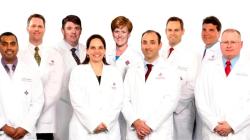How much school is needed before becoming a doctor?
Becoming a doctor typically requires an extensive educational journey that includes several years of schooling. Here's a general overview of the educational path to becoming a doctor in the United States, which is a common example:
Bachelor's Degree (4 years):
- The journey begins with a bachelor's degree from an accredited college or university. While there is no specific undergraduate major required for medical school, most pre-medical students choose majors in biology, chemistry, or related fields.
- During undergraduate studies, students need to complete pre-medical prerequisites, which include courses in biology, chemistry, physics, and mathematics.
Medical Doctor (MD) or Doctor of Osteopathic Medicine (DO) Degree (4 years):
- After completing a bachelor's degree, aspiring doctors attend medical school for either an MD or DO degree, which typically lasts four years.
- Medical school consists of both classroom instruction and clinical training. Students learn about various medical specialties and gain hands-on experience in clinical settings.
Residency (varies, typically 3-7 years):
- After earning an MD or DO degree, graduates must complete a residency program in their chosen specialty. The length of residency varies depending on the specialty and can range from three to seven years or more.
- During residency, doctors work under the supervision of experienced physicians and gain specialized training in their chosen field.
Fellowship (optional, 1-3 years):
- Some doctors choose to pursue further specialization through fellowship programs. These programs typically last one to three years and provide additional training in a subspecialty.
Licensure and Board Certification:
- After completing residency or fellowship, doctors must obtain a medical license to practice medicine legally in their state.
- Many doctors also seek board certification in their chosen specialty by passing board exams, which can enhance their qualifications and career prospects.
The entire educational journey to become a doctor can take anywhere from 8 to 15 years or more, depending on factors such as the chosen specialty, the duration of residency and fellowship, and individual career goals. It's a lengthy and demanding process, but it allows doctors to develop the knowledge and skills necessary to provide medical care to patients effectively. Please note that specific requirements and educational pathways may vary in different countries.
The Lengthy Path to Becoming a Doctor: How Much Schooling is Required?
Becoming a doctor is a long and challenging process that requires a significant investment of time and resources. In the United States, it takes an average of 10-14 years to become a fully licensed doctor. This includes:
- 4 years of undergraduate school
- 4 years of medical school
- 3-7 years of residency training
Some students may choose to participate in accelerated or combined programs that can reduce the total time to medical school. For example, some colleges offer BS/MD programs that allow students to earn their bachelor's degree and medical degree in 6 or 7 years.
Educational Milestones on the Road to Becoming a Physician
Here is a more detailed overview of the educational milestones on the road to becoming a physician in the United States:
- Undergraduate school: During your undergraduate education, you will take a variety of courses in the sciences, humanities, and social sciences. You will also need to take the Medical College Admission Test (MCAT).
- Medical school: Medical school is a rigorous four-year program that covers a wide range of topics, including anatomy, physiology, biochemistry, pathology, pharmacology, and clinical medicine. During medical school, you will also complete clinical rotations in a variety of medical settings, such as hospitals, clinics, and private practices.
- Residency training: After graduating from medical school, you will need to complete a residency program in your chosen specialty. Residency programs typically last 3-7 years, depending on the specialty. During residency, you will work under the supervision of experienced physicians and gain hands-on experience in your chosen field.
Understanding the Educational Investment in a Medical Career
The educational investment in a medical career is significant. The average cost of tuition and fees for four years of medical school in the United States is over $250,000. In addition, students typically take out significant loans to cover the cost of living and other expenses during medical school and residency.
However, the financial rewards of a medical career can be significant. According to the Bureau of Labor Statistics, the median annual salary for physicians and surgeons in the United States is over $200,000.
Conclusion
Becoming a doctor is a long and challenging process, but it is also a rewarding one. Doctors play a vital role in society and have the opportunity to make a real difference in the lives of their patients.
If you are considering a career in medicine, it is important to weigh the costs and benefits carefully. Be sure to research the educational and financial requirements carefully before making a decision.











